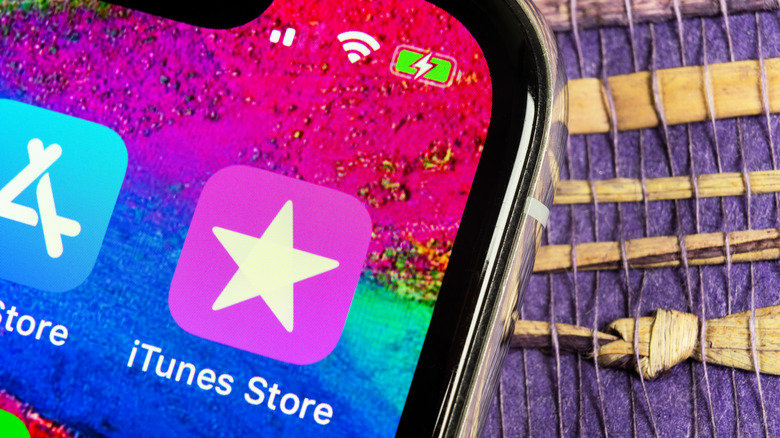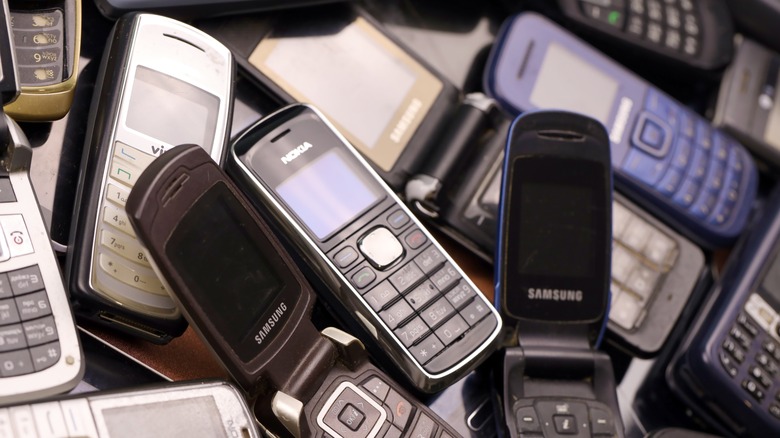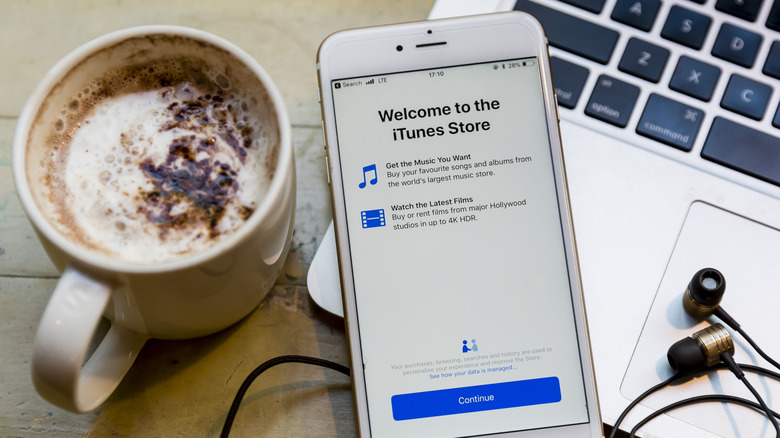The Reason Apple Doesn't Want You To Use Custom Ringtones
If you've ever used an Android device, you're likely used to being able to choose a custom ringtone — all you have to do is open Settings and select a song or an audio clip.
But iOS only offers generic, built-in sounds as ringtones. You can technically set up custom ringtones using a complicated workaround, but it involves a computer and iTunes (per How-To Geek), which many iPhone owners don't even use anymore.
Of course, all of this begs one question: why doesn't Apple simplify the process of using a custom ringtone on the iPhone? It's not a new problem, and many users have complained about it. Because the brand is famous for prioritizing seamlessness and simplicity, the fact that nothing has changed suggests that it's a deliberate decision on Apple's part. And it turns out that it is. We did a little digging to find out why Apple won't make the process as easy as it should be, and what we found is not surprising, but it's interesting all the same.
First, a backstory
Apple struck gold selling ringtones when they released the iPhone in 2007. Back in the 2000s, ringtones were a huge deal. Because phones were limited in their capabilities, there weren't many options for personalization. Companies saw an opportunity to fill the gap and give users something to customize their phones — that's how premium ringtones were born.
By 2004, the ringtone market was a global billion-dollar industry. Per a now-archived New York Times article, Verizon charged $3 for ringtones, while T-Mobile and Sprint wanted $2.50. Even at these prices, users could not modify the tunes — there was no option to select the part of the audio they wanted to use as a ringtone, nor could they loop or make any such changes. Depending on the provider, these payments were sometimes time-limited, and the ringtones would need to be repurchased after they expired. Sprint ringtones expired after 90 days, and Verizon's lasted for a year.
Here's where things got interesting: Apple came onto the ringtones scene in 2007 and disrupted the industry with a new sales model. iPhone users could purchase full-length songs from iTunes for $0.99, then pay an additional $0.99 to convert the song to a 30-second ringtone, bringing the total cost to $1.98. For the time, this was quite revolutionary — not only were customers paying less than two dollars but the full-length song was included. They could edit the songs to select start and end points, make loops, and make other customization decisions.
Apple's golden goose
Apple's model made them a ton of money and set an example for other players in the industry, but down the line, as phones became smarter, ringtones became less sought after. Most of the companies that were exclusively selling ringtones went under, but Apple changed course and adopted a new approach.
Instead of ditching ringtone sales entirely, Apple revised the $1.98 price tag to $1.29 for a full-length song on iTunes. You didn't need to pay extra to convert the song to a snippet — you could get to tweaking after purchasing. Apple also allows third-party creators to make and list ringtones for sale on the iTunes Store — and a percentage of the vendors' revenue goes to the company.
To protect this income stream, Apple has made it frustratingly difficult to use a custom ringtone on the iPhone via any alternative method. It's the same motive behind shipping iPhones without charging adapters (and soon, maybe, without cables) — they make more money selling them separately.
So there you have it. There's no straightforward way to use a custom ringtone on your iPhone because Apple intends to monetize everything it can. The company did not become one of the world's biggest tech brands by giving services away for free.


